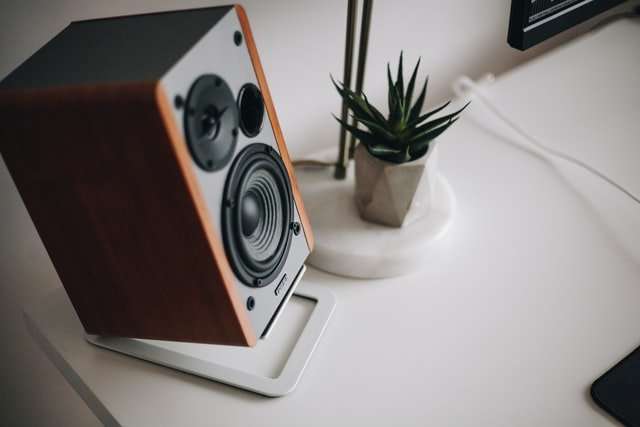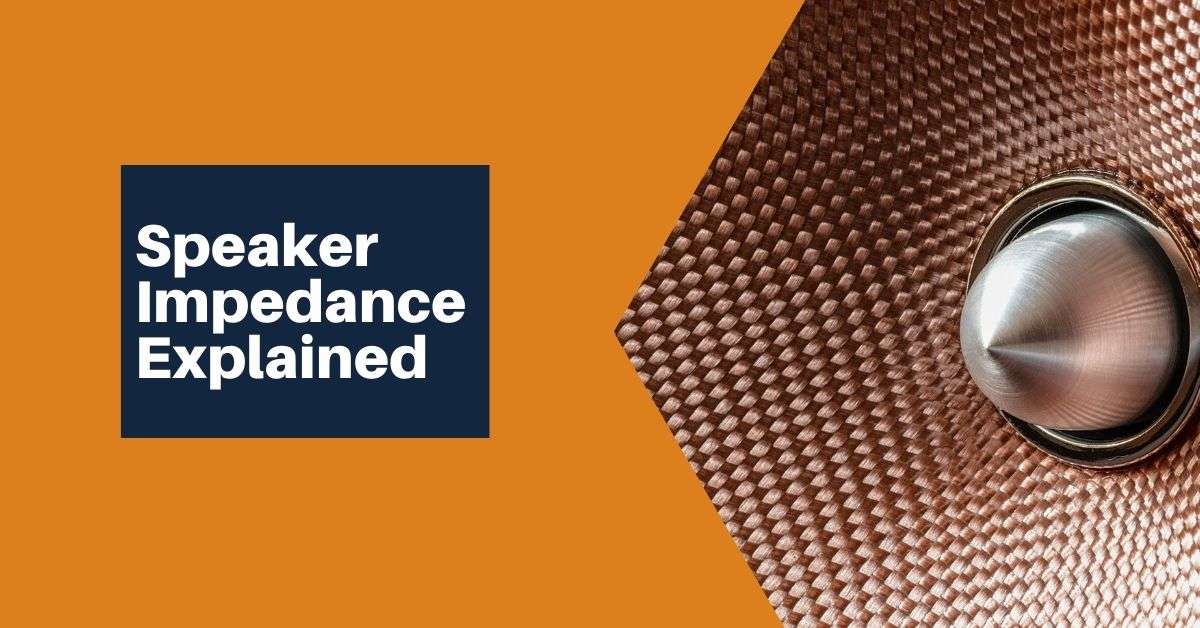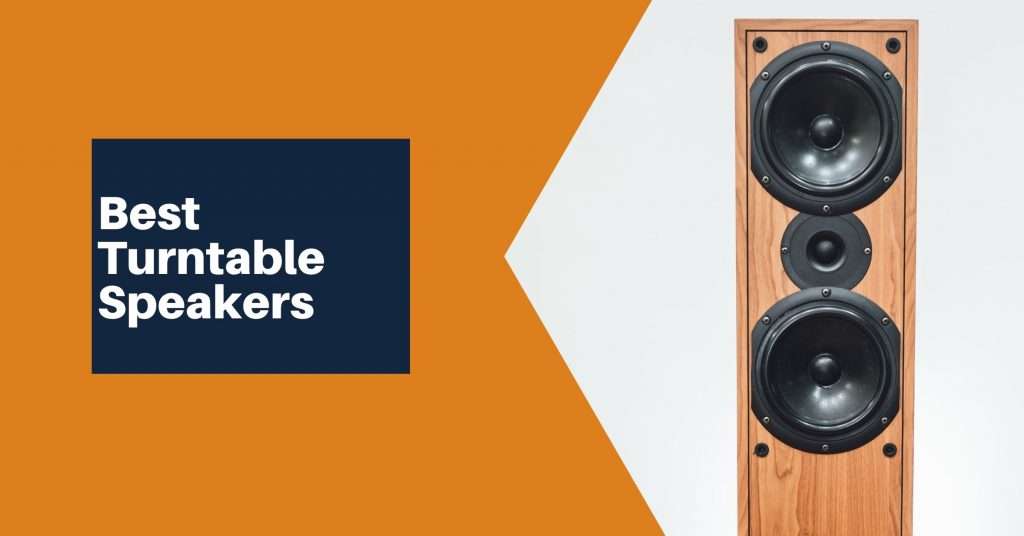If you’d like to connect your speakers to your amplifier, it’s important to have at least a rudimentary understanding of speaker impedance. With this knowledge in tow, you can ensure you’re setting everything up safely and correctly.
The concept of a speaker’s impedance is often presented to novices as something very complicated or too advanced to engage with. As a result, many people find themselves underinformed on this subject.
However, it’s something that has a significant impact on the way you use your audio system and speakers. If your lack of knowledge leads to you connecting multiple speakers in an unsafe manner, you risk inflicting damage on it.
So, what is impedance? What does it mean for your equipment, and why is it so important to understand? We’ll answer all these questions and more in the following article. Read on for an introduction to this vital concept to better understand how to use your audio equipment safely and efficiently.
Defining Speaker Impedance
The word “impedance” refers to any resistance to the output current the amplifier supplies. Speaker impedance is specifically the resistance offered by a speaker to the amplifier’s output current.
To phrase it from the amplifier’s perspective, the impedance affects the amount of current the amp will be able to efficiently transmit to a given speaker.
This explanation makes the concept sound simple enough, but, you may be wondering why it’s so crucial to understand the impedance of speakers when working with this sort of equipment.
Does it really make that much of a difference in how the receiver amplifier performs?
As a matter of fact, making sure your receiver amplifier is compatible with any speakers you are planning to attach to it is extremely important. Improper or ill-informed use can have a very detrimental impact on your equipment’s functionality. That’s why it’s imperative that you focus on impedance matching when pairing your audio equipment.
We’ll go over this in more detail later on.
How Is Speaker Impedance Measured?

The unit of measurement used to describe impedance is called an ohm, and it is usually expressed as an omega symbol in writing. The trick is that as the frequency of whatever sound is coming through the device changes, the impedance is going to change along with it. As such, this frequency response value is not consistent and is constantly in flux.
When it comes to marking the impedance for various products, manufacturers use an average of sorts to calculate what’s called the “nominal impedance.”
This is the figure you’ll see when buying new speakers. So, when you see a product listed as 4-ohm, 6-ohm or 8-ohm speakers, these impedance ratings refer to the nominal impedance, not the literal impedance during use.
You’ll need to pay attention to this when you match the impedance for compatibility with your receiver amplifier, so be sure to take note of that measurement before you buy.
How Does Impedance of a Speaker Affect the Use of an Amplifier?
Remember that the impedance is a measure of restriction from the speaker on the current from the amplifier. The less restriction there is, the easier it is for amplifiers to do their job. But with more restriction, the amplifier will have to work even harder to produce the same results.
Therefore, 4-ohm speakers are going to put less stress on an amplifier than 6 or 8 ohms speakers. This reality exists because the 4-ohm speakers will offer half the resistance, allowing the current to pass through more easily. But is every amplifier designed to handle all these different impedance levels?
Unfortunately, they aren’t. That’s where impedance matching comes in. When selecting products to use with your amplifier, you have to make sure their impedance is compatible with the load the amp is comfortable with.
If you’re not sure, you should double-check what your speakers are rated before you buy new equipment. You wouldn’t want to buy an 8-ohm speaker only to come home and realize a 4-ohms or 6-ohms would’ve served you more efficiently.
How Do I Know What Speaker to Use With My Amplifier?
If you’re unsure what speakers are compatible with your amplifier, you should check the impedance range on the box the amplifier came in or in its user’s manual.
If you’ve thrown both of these away, you may be able to find this information on the back of the receiver, online on the manufacturer’s website, or ask an industry professional who may be familiar with the model.
You need to make sure the impedance value is below or on par with the acceptable range for the amplifier. For instance, if the amp has an impedance range of 4 to 8 ohms, you’re in the clear to use a 4-ohms, 6-ohms, or 8-ohms speaker. However, you should avoid products of 10 or 12 ohms. Equipment with lower impedance (like a 4-ohm speaker or 8-ohm speaker) tends to produce better sound anyway.
What Can Happen If I Use the Wrong Speaker-Amp Combo?
Improper matching can yield some pretty negative results, so you should always make sure to only pair two pieces of equipment that are meant for simultaneous use.
If you connect speakers with too high of a resistance rating to your amplifier, one of three things will occur. The best-case scenario is that the amplifier’s built-in electrical defenses will kick in, and it will shut itself off to avoid potential damage.
The other two options are that the receiver will either die or blow a fuse, which could render it in need of repair or replacement. No one wants their priceless audio equipment to suffer unnecessary harm due to speaker load, so it’s imperative to pay attention to these details to ensure safe and correct usage.
For more information on how to connect your speakers properly, consult this guide.
Final Thoughts — Using Impedance Matching to Your Advantage

As you can see, it’s very important to understand the principle of matching the impedance to properly use your audio equipment. Luckily, the concept is not difficult to grasp and should be easy to apply to practical use.
So what are you waiting for? Start using your newfound knowledge of speakers and amplifiers’ power output to your advantage to get the most out of your audio equipment today!
Related Articles

Lead Editor / Owner
After beginning his career in the video and audio recording industry, Andrew started HiFi Hippo to share his knowledge and passion for vinyl and vintage audio with other readers.


